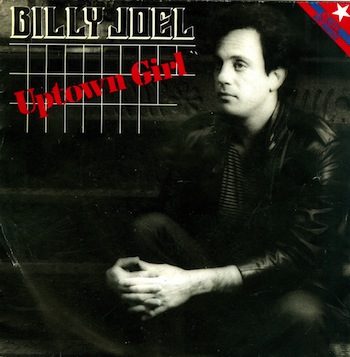Most songwriters don’t know what a motif is, or how to use it.
_______________
Download “The Essential Secrets of Songwriting”, and become a top-tier songwriter starting today!
_______________
 You often hear about the hook as a crucial songwriting element. A hook is a short musical idea, typically a melodic fragment partnered with a catchy rhythmic component that often appears in a chorus. It repeats frequently, and many see it as a crucial part of a hit song’s success. There are in fact several kinds of hooks, and they can be an important ingredient to making a song memorable.
You often hear about the hook as a crucial songwriting element. A hook is a short musical idea, typically a melodic fragment partnered with a catchy rhythmic component that often appears in a chorus. It repeats frequently, and many see it as a crucial part of a hit song’s success. There are in fact several kinds of hooks, and they can be an important ingredient to making a song memorable.
But there is another element related to the hook, called the motif. Like the hook, a motif is a short, repeated idea. But while a hook tends to repeat the same way each time, and is very noticeable, a motif serves as a starting point – a building block – for other ideas that appear in a song, and does its work mainly in the background. Think of a motif as being similar to a certain shade of green that’s used as the main wall colour in the kitchen, but also serves as the colour of the mat in the bathroom. You wouldn’t notice that unless you were looking to make the comparison. All you’d notice is that the mat colour looks great.
A couple of musical examples to make the comparison between hook and motif clear: David Bowie’s repetitious “Golden years…”, in the chorus of the song by the same name, is a perfect example of a hook. It’s repetitious, short, catchy and memorable.
The Beatles’ song “Yesterday” uses a melodic motif. The word “yesterday” itself is 3-note motif, where the first note is followed by two notes a tone lower:
That shape is repeated on several different words, starting on different pitches each time:
That is a textbook example of how a motif is so useful in music. It strengthens the structure of the song in ways that listeners aren’t often aware. They hear a motif at work usually without realizing it, and that’s one of the main differences between a motif and a hook. A hook is up-front and obvious, and presented more-of-less the same way every time, while a motif is used as an idea that gets modified and developed as a song progresses.
So what’s more important to a song? For hit songs, history shows that hooks have a compelling power to bring listeners back, and that’s an important aspect of success in pop songwriting. But a motif has the power to strengthen the structure of a song in a way that a hook can’t, because a motif pulls various elements of a song together.
In that sense, a motif, it could be argued, is more important to the longterm success of a song than a hook. Keep in mind, however, that there’s no reason that a song can’t have both, and more power to it if it does.
An example of a song that uses hook that also operates like a motif, helping to create and develop other ideas within a song, is Billy Joel’s “Uptown Girl“. The title words are sung as three strong notes in a catchy, hooky sort of way. But in addition to that 3-note idea acting as a hook, it serves as a building block for much of the melodic/lyrical development that happens in the song “…uptown world”, “backstreet guy” (which features an octave leap), and then develops into a new melodic idea on “…told her why”, and continues to develop from there.
______________
 Written by Gary Ewer. Follow on Twitter.
Written by Gary Ewer. Follow on Twitter.
Download “The Essential Secrets of Songwriting” 6-eBook Bundle: $83.75 $37.00












